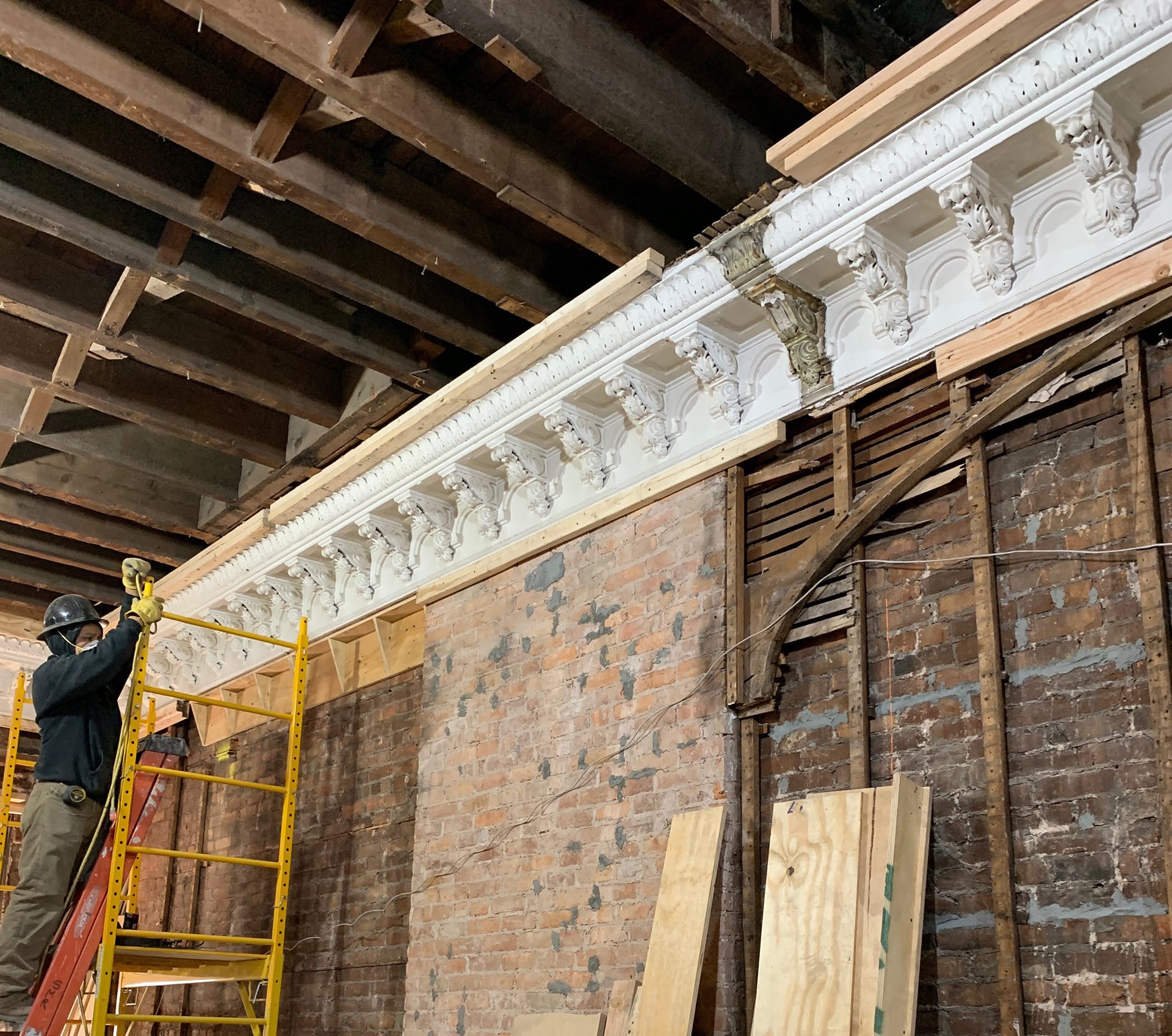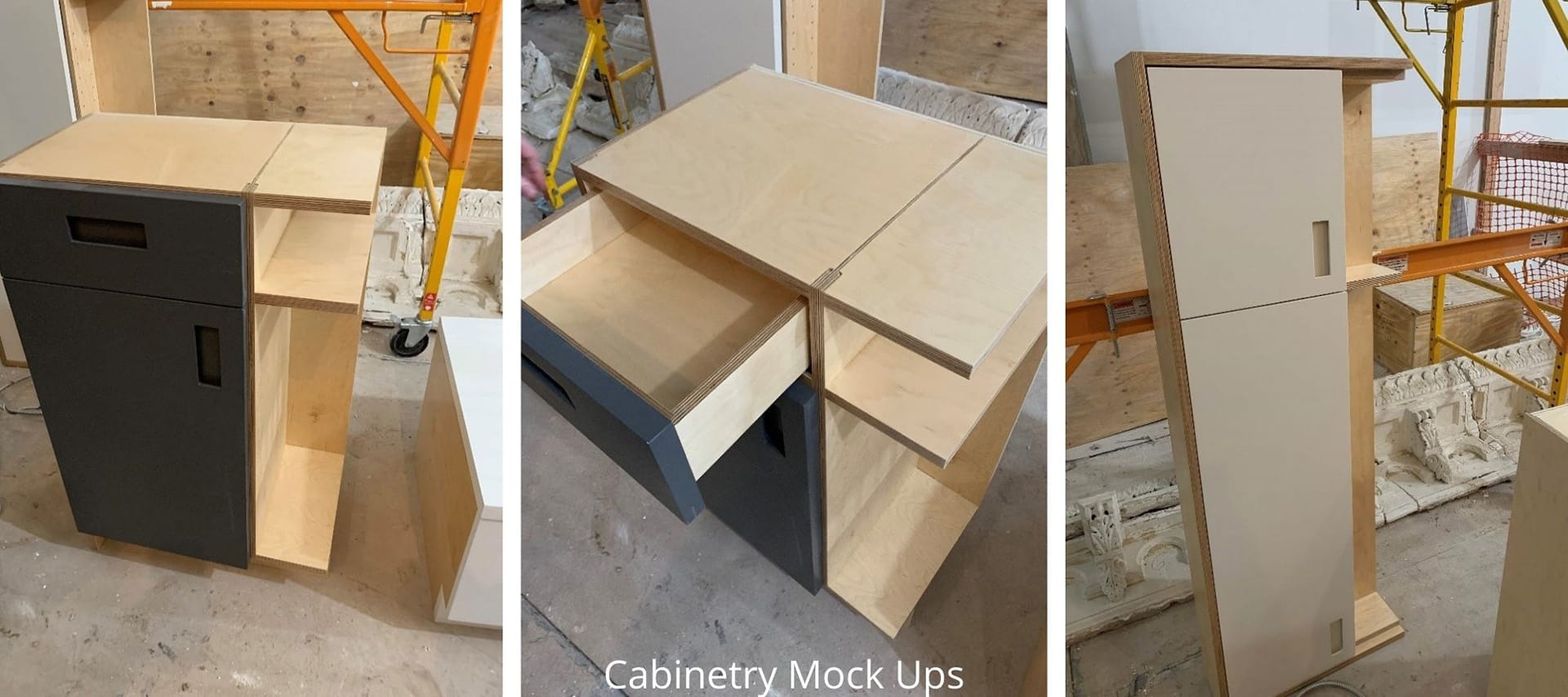Custom-Crafted Passive House
The surviving historic detailing in this Carroll Gardens brownstone became a shining feature of the finished home. Our goals included preserving historic details and connecting living spaces across multiple levels, while meeting Passive House standards. Implementing Passive techniques into historic homes can be challenging, and this project was no exception. Partnering with experts and artisans allowed us to perfect a custom-crafted passive house.

When we began the restoration, we realized it would be impossible to remove the historic crown molding without destroying it. Therefore, it had to be incorporated directly into the design of the continuous air barrier. An angled shelf below the crown created a transition for the liquid-applied air barrier to bridge from the masonry to the crown. Meanwhile, above the crown, we installed blocking to back the masonry and apply the seal without damaging the crown.
We created a split-level space to connect the parlor and garden level living rooms by dropping the back half of the parlor floorplate. Custom millwork and cabinetry seamlessly connect the garden-level den to the kitchen and dining area. Further exposed edge plywood by ApplePly combines with laminates and fabrics to create playful and cohesive light. Mocking up the samples and scrutinizing details in person was crucial to achieving the final product.

We relied on BIA Interiors and the build team at SMR Craftworks and Keany Interiors to meet all three of our project goals in this custom-crafted passive house. As a result of these collaborations, we executed a high level of detail in the complex living space.





.jpg)
.jpg)
.jpg)